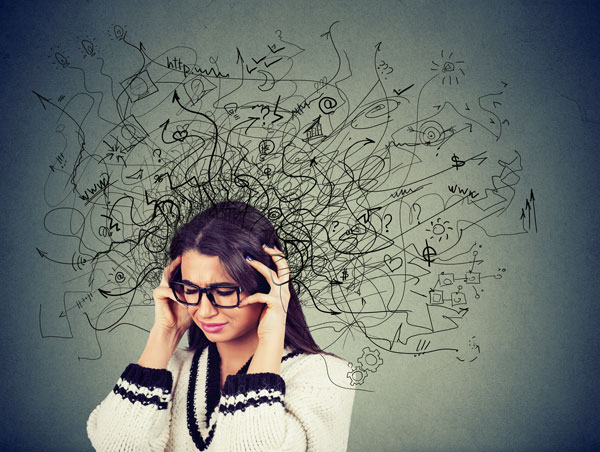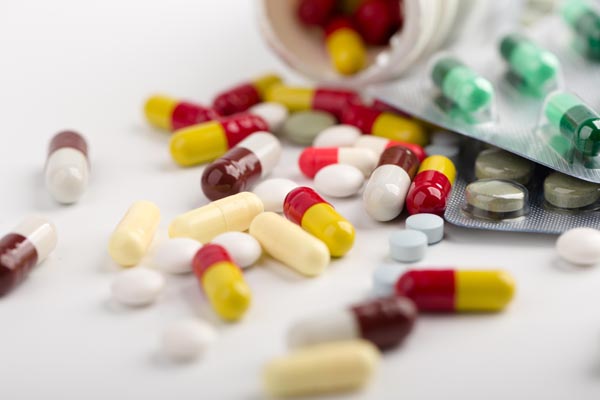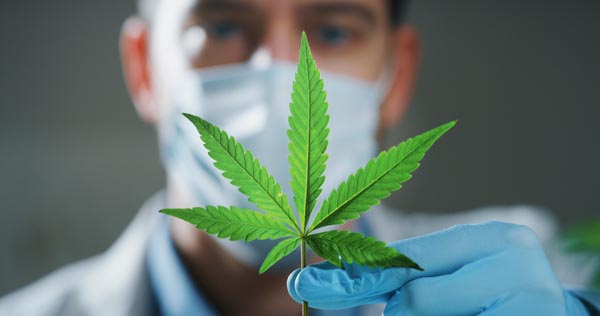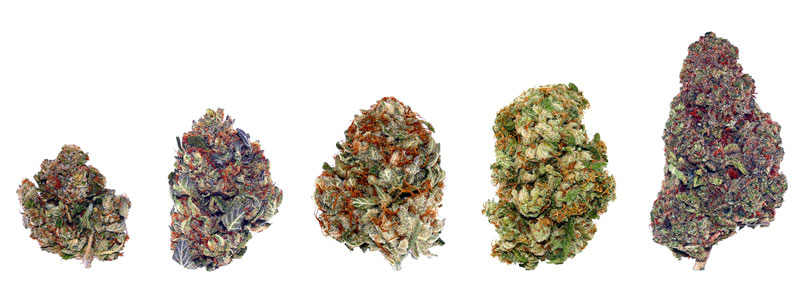ADD & ADHD
Every task in life requires focus. From washing dishes to having a successful relationship or career, being able to focus and pay attention can feel impossible for those struggling to deal with the symptoms of ADD and ADHD.
 Diagnosis of ADD and ADHD is at an all-time high. In fact, one study published in 2018 found that as many as 10.2% of all children and adolescents between the ages of 4 and 17 in the United States have ADD or ADHD. The positive news is that many of these diagnosed children will often learn how to successfully manage their symptoms, while one third of people suffering from ADD or ADHD find that they have no symptoms in adulthood.
Diagnosis of ADD and ADHD is at an all-time high. In fact, one study published in 2018 found that as many as 10.2% of all children and adolescents between the ages of 4 and 17 in the United States have ADD or ADHD. The positive news is that many of these diagnosed children will often learn how to successfully manage their symptoms, while one third of people suffering from ADD or ADHD find that they have no symptoms in adulthood.
Sadly however, many people who continue to suffer from the symptoms of ADD and ADHD into adulthood feel as though they are alone in their struggle. Many are unable to find relief from the medications and treatment options that are currently available.
This has led many people to seek “alternative treatments” like medical cannabis.
Is medical cannabis an option for your symptoms of ADD or ADHD? For many people it depends on their individual needs.
In this article, we are going to look at some of the symptoms of ADD/ADHD and how medical cannabis affects those symptoms. It is our goal to provide you with the information that you will need to make an educated decision on whether medical cannabis is an option for you.
After reading this article you should have a basic understanding about medical cannabis and ADD/ADHD so that you can further discuss your options with your healthcare provider(s). After reading this article, if you have any additional questions or comments please leave them in the comment area below and a Kanteeva team member will get back to you as soon as possible.
What Is ADD/ADHD?
Before we get started, it is important to understand the difference between ADD and ADHD.
According to WebMD:
ADD is a type of ADHD that does not involve constant movement and fidgeting.
With that said, it is important to understand that even diagnosing ADHD can be very challenging for healthcare providers. This is because the symptoms of ADHD can be significantly different for each individual. Now that you have a better understanding of the difference between ADD and ADHD, let us talk more about ADHD.
What Is ADHD?
WebMD, lists the definition of ADHD as:
a chronic condition marked by persistent inattention, hyperactivity, and sometimes impulsivity.
While that definition seems straightforward, it does not accurately describe what living with the symptoms of ADHD is like on a daily basis.
Many people who suffer from ADHD often report symptoms like:
- Difficulty maintaining focus and concentration
- Poor organizational skills
- Being forgetful or easily distracted
- Difficulty paying attention to details
- Impulsivity
- Agitation
- Hyperactivity (fidgety, squirmy, talking excessively or talking fast)
- Issues with mood and random mood changes for no reason
- Difficulty with procrastination and getting tasks completed on time
The symptoms listed above are just a few of the many issues that people trying to cope with ADHD face in their day-to-day lives.
For people trying to deal with the symptoms of ADHD, everyday life can often feel like a constant struggle. To make matters worse, many family members and friends do not understand ADHD and simply can not understand how even completing the simplest of tasks can often feel overwhelming.
For those suffering from ADHD, this often leads to other issues like isolation, feeling excluded, feeling misunderstood, depression and anxiety.
In professional life, the symptoms of ADHD can often result in issues such as missing work, forgetting work schedules, missing deadlines, dealing with reprimands and often becoming unemployed. Many people who suffer from ADHD find themselves in a vicious cycle of unemployment and depression while trying to understand why they can not force themselves to focus and succeed in the same way that their peers do.
When it comes to having a personal life, ADHD can make things very challenging.
Friends, partners and family members can often misunderstand that tardiness and disorganization are not a reflection on how people with ADHD feel about them, but are rather symptoms of the ailment. To make matters worse, people with ADHD know that these behaviors are occurring but do not understand how to stop these behaviours or why they are behaviouring like this in the first place.
When sufferers of ADHD seek help from their healthcare provider(s), many report feeling as though modern medicine has failed them or that they could have better results with other treatment options that do not focus solely on medication.
When looking at how ADHD is treated presently, it can be easy to see why so many people with this ailment report feelings of frustration.
How Is ADHD Currently Treated?

ADHD is most commonly treated by using a combination of behavioral therapy and medication. However, while these therapy options are the most prevalent, when it comes to treating this ailment even obtaining a diagnosis can often be frustrating.
There is no clear-cut way to obtain a diagnosis for ADHD and often it relies on finding patterns of behavior that match certain criteria. For adults with ADHD, many do not even realize they have the disorder until much later in life.
This makes it is far more difficult to treat symptoms in adulthood than if therapy would have been started at a younger age.
Men and women typically display completely different symptoms of ADHD. This makes it far more challenging for women to obtain a diagnosis than men. Women with ADHD are more likely to suffer from depression, anxiety, eating disorders and obesity, while men are more likely to get into car accidents, experience anger and emotional issues, and ultimately have trouble with substance abuse as they try to self-medicate to find relief from their symptoms.
For those who are able to get a diagnosis of ADHD and begin therapy, the medications they are given to try and cope with the symptoms of the ailment often have severe side effects associated with them.
The primary medications given for ADHD fall into two categories: stimulants and non-stimulants.
Stimulants
These medications are often referred to as being “safe” as they have been used for decades in the treatment of ADHD. Normally, these medications include things like methylphenidate (Ritalin) and amphetamines (Eveko, Adzenys XR-ODT, Dyanavel). While these medications are thought to be “safe,” they do have numerous side effects. Common side effects of amphetamines include restlessness, insomnia, acne and blurred vision. Rarer side effects that can occur include seizures, heart problems and psychosis.
Non-Stimulants
These medications are often given when people do not respond well to stimulant medications or if non-stimulant medication is preferred. There are two primary non-stimulant medications prescribed for the symptoms of ADHD: atomoxetine (Strattera) and guanfacine (Tenex). Just like their stimulant counterparts, these medications have multiple side effects. Common side effects include things like dizziness, dry mouth and loss of sexual ability, desire, drive, or performance. Uncommon side effects include hives, welts, skin rash, itching and irregular heartbeat.
Sadly, many ADHD medications are also not covered by health insurance.
This results in a significant financial burden for many people to cope with on top of trying to manage their symptoms.
The combination of side effects, overall medication effectiveness and financial stress has led many people to try alternative options like medical cannabis.
Can Medical Cannabis Help Treat ADHD?
Cannabis appears to treat ADD and ADHD by increasing the availability of dopamine … This then has the same effect but is a different mechanism of action than stimulants like Ritalin and Dexedrine Amphetamine, which act by binding to the dopamine and interfering with the metabolic breakdown of dopamine.
– Dr. David Bearman, MD (via Leafly)
While no one understands exactly what causes ADHD, there have been multiple studies that have shown a connection with decreased levels of dopamine in people suffering from chronic ADHD. Dopamine is a neurotransmitter that regulates emotional responses and helps us associate action with rewards.
Basically, it is the chemical that is responsible for the feelings of pleasure, happiness and reward.
This is important to understand as THC has been shown to increase dopamine quantity as well as the ability for dopamine to be transmitted throughout the brain. Also, many of the side effects associated with ADHD medications can be regulated using medical cannabis. Since many stimulant medications can often have side effects like insomnia, nausea, abdominal cramping and appetite cessation, cannabis can often be the difference between successful therapy and wanting to quit therapy due to the overwhelming side effects of many ADHD medications.
Many medical cannabis users report that cannabis allows them to successfully manage their symptoms of ADHD.
The use of cannabis counteracts many of the side effects of ADHD medications, and some medical cannabis patients have even reported that they have been able to stop using ADHD medications altogether after being on cannabis therapy.
What Does Science Say About Medical Cannabis and ADHD?

All patients had experienced an improvement of a variety of symptoms by cannabis flowers, including improved concentration and sleep, and reduced impulsivity, by the use of cannabis. In five cases dronabinol [THC] was tried, which was also effective.
– Successful authorised therapy of treatment resistant adult ADHD with Cannabis: experience from a medical practice with 30 patients, Eva Milz and Franjo Grotenhermen
As is the case with many other ailments, more scientific research is needed to fully understand the effects of cannabis on the symptoms of ADHD. However, there has been some research already conducted that shows great promise when it comes to treating the symptoms of ADHD with medical cannabis.
As briefly mentioned above, past research into ADHD has shown that dopamine levels are often lower in people suffering from ADHD than they are in those who do not suffer from the ailment.
Other research has shown that THC not only increases dopamine levels like many stimulant medications, but it also increases the rate of transmission of dopamine throughout the brain. This is important to understand as research conducted in 2002 showed that dopamine directly influences a person’s ability to have better cognition and attention span.
This means that dopamine levels affect how well you can pay attention and retain the information that you are taking in.
For those suffering from ADHD, these are often crucial skills that they struggle with daily.
Aside from how cannabis can directly affect the symptoms of ADHD, it has also been shown to help relieve many of the side effects associated with many popular ADHD medications. For example, medical cannabis has been shown to help relieve the symptoms of insomnia and can help patients relax during evening hours. This is especially true when it comes to potent Indica strains, since these strains are typically very sedative in nature.
Another common side effect associated with multiple ADHD medications is nausea and lack of appetite.
Many cannabis strains are known to help stimulate appetite and reduce nausea.
Research still needs to be conducted on how medical cannabis affects people suffering from ADHD, but the initial results show significant promise in helping to alleviate many of the symptoms associated with this ailment and many of the side effects associated with popular ADHD medications.
The Important Information from Cannabis Studies and Community Members

If you are considering trying cannabis to help treat your symptoms of ADHD, there are a few things that you need to take into consideration. Based on the scientific data that we presently have access to, cannabis has been shown to help alleviate the symptoms of ADHD for many individuals.
However, it is important to note strain selection and individual needs are very important when it comes to finding success with medical cannabis.
For example, many users report that while Indica and Indica Dominant Hybrid strains are great choices to relax with at the end of the day, using these strains during the day often results in feelings of severe sedation and fatigue. Instead, many patients report using Sativa or Sativa Dominant Hybrids for daytime use.
You can find more information on the top ADHD strains below.
Another important factor that you should consider before trying medical cannabis for the symptoms of ADHD is that every person will respond differently to cannabis. This is especially true when it comes to people suffering from ADHD. Some patients report that medical cannabis helps them tremendously with managing ADHD symptoms, while others report that they have tried multiple cannabis strains with no success. Some patients have also reported that they have only found one strain of cannabis that helps them to manage their symptoms of ADHD effectively. For this reason, it is very important that you discuss your treatment options with your healthcare provider(s) before trying medical cannabis.
Since every individual person responds differently to cannabis therapy, your healthcare provider(s) can often guide you on a path of cannabis therapy that has worked well for other patients and they can help you track your success over time.
Many medical cannabis community members report that they have found success with cannabis therapy by keeping a journal of how different strains have affected their ADHD symptoms. This will allow you to keep track of your cannabis therapy and to monitor how different types of cannabis strains affect you in different ways. Doing this will allow you to choose the best strains for your own unique needs when it comes to treating ADHD.
How to Find the Best Strains for ADHD?

When it comes to selecting the best medical cannabis strains for ADHD, there are a few things that you should consider before selecting one. First, while many studies have shown that THC is responsible for helping you increase dopamine production and transmission, many people report that there is a very fine line between too much THC and proper dosing.
Another important factor to take into consideration is whether you want to try cannabis in the evening or for daytime use. Many users report that Indica and Indica Dominant Hybrid strains are best suited for evening use, while high THC Sativa strains are a great choice for managing ADHD symptoms during daytime hours. Many users also report that they choose to try medical cannabis during evening hours at first before beginning therapy during daytime hours.
The best way to determine your individual needs is to consult with your healthcare provider.
To get you started on finding the best cannabis strains for your individual needs, we here at Kanteeva have selected a few of the most popular strains that are often credited for helping others in the medical cannabis community find relief from the symptoms of their ADHD.
What are the Top Strains for ADHD?
We base these strain recommendations on testimonials from medical cannabis community members, anecdotal research, scientific research and a variety of other factors like accessibility.
Durban Poison
This 100% Sativa landrace strain is very popular among the medical cannabis community for helping to manage the symptoms of ADHD during daytime hours. It has a high THC content between 16% - 20% and is known for causing an energetic high that many people report leaves them feeling focused and euphoric. Durban Poison is known as the “Espresso of Cannabis” by many cannabis enthusiasts. Beginners to medical cannabis should be careful and dose slowly as this strain has been known to cause feelings of paranoia and anxiety when overconsumed.
Green Crack (Green Cush)
This Sativa Dominant Hybrid strain has a reputation in the medical cannabis community for helping treat the symptoms of ADHD during the daytime. It has a high THC content that averages around 17% and patients report that Green Crack gives an energetic and uplifting high without the mental buzz that often accompanies Sativa strains. It is also known for helping patients increase focus and attention to detail. This is not a strain to be consumed during evening hours as it can cause a boost of energy that can make falling asleep very challenging.
Granddaddy Purps
This potent Indica Dominant Hybrid is a strain that is frequently mentioned among the medical cannabis community for helping treat the side effects of many ADHD medications. With a potent THC content of 21% or more, this strain is best consumed during evening hours as many patients report that it creates feelings of deep body relaxation and sedation. Be careful when consuming Granddaddy Purps for the first time as it can be overwhelming to medical cannabis newcomers and when consumed in excess can leave you feeling groggy and fatigued the following day.
Sour Diesel
This Sativa Dominant Hybrid is a very popular choice among patients suffering from ADHD as they have reported effects that help keep them steady and focused. With a THC content that averages 20% or more, be careful that you do not consume too much, too quickly, as Sour Diesel has been known to cause significant feelings of paranoia and anxiety. This strain is best consumed during daylight hours as it can cause an energizing effect that interferes with sleep if consumed during the evening.
Final Thoughts
Trying to cope with the symptoms of ADHD can be an overwhelming experience; it can affect both your professional and personal life. If left untreated, ADHD can make many people feel as though their life is completely unmanageable.
Thankfully, thousands of people all over the world have found relief from ADHD by using medical cannabis.
If you are interested in starting a medical cannabis program for your ADHD symptoms, we strongly suggest that you speak with your healthcare provider(s) and join the Kanteeva community for more helpful information from other patients and practitioners.
We Want to Hear from You
 Have you or a loved one found relief from the symptoms of ADHD by using medical cannabis? If you have, we would love to hear from you!
Have you or a loved one found relief from the symptoms of ADHD by using medical cannabis? If you have, we would love to hear from you!
Please help us spread the word about the amazing benefits that medical cannabis patients are finding all over the world by becoming part of the Kanteeva community.
With your help, thousands of others could finally find relief too.
Please share your stories, comments and questions below. If you are a medical cannabis patient, please also mention what strain has been effective at helping you find relief from the symptoms of ADHD.
Thank you for taking the time to read this article. We look forward to hearing your story soon!
Learn. Share. Connect.